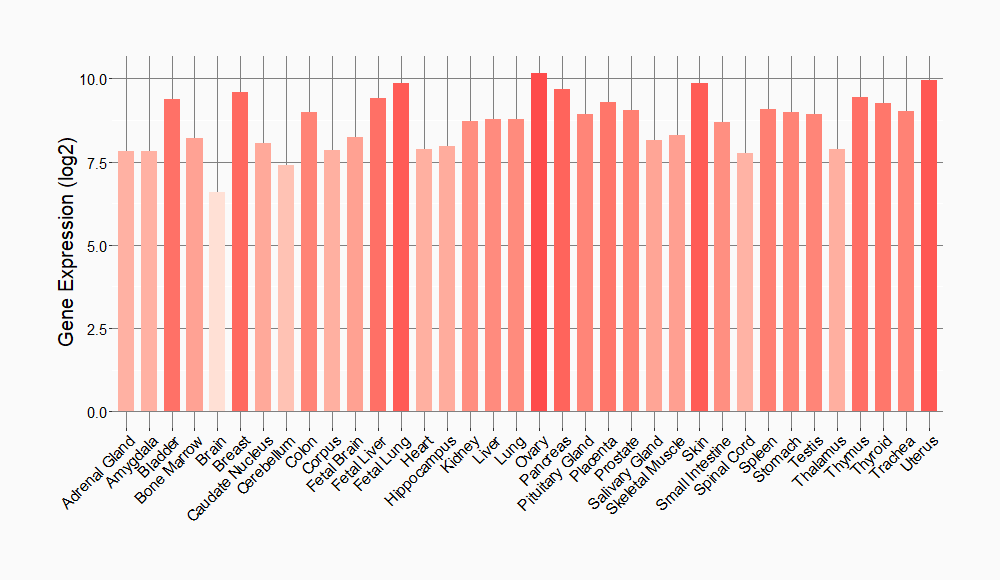Molecule Information
General Information of the Molecule (ID: Mol01853)
| Name |
Nucleophosmin (NPM1)
,Homo sapiens
|
||||
|---|---|---|---|---|---|
| Synonyms |
Nucleophosmin; NPM; Nucleolar phosphoprotein B23; Nucleolar protein NO38; Numatrin
Click to Show/Hide
|
||||
| Molecule Type |
Protein
|
||||
| Gene Name |
NPM1
|
||||
| Gene ID | |||||
| Location |
chr5:171,387,116-171,411,810[+]
|
||||
| Sequence |
MEDSMDMDMSPLRPQNYLFGCELKADKDYHFKVDNDENEHQLSLRTVSLGAGAKDELHIV
EAEAMNYEGSPIKVTLATLKMSVQPTVSLGGFEITPPVVLRLKCGSGPVHISGQHLVAVE EDAESEDEEEEDVKLLSISGKRSAPGGGSKVPQKKVKLAADEDDDDDDEEDDDEDDDDDD FDDEEAEEKAPVKKSIRDTPAKNAQKSNQNGKDSKPSSTPRSKGQESFKKQEKTPKTPKG PSSVEDIKAKMQASIEKGGSLPKVEAKFINYVKNCFRMTDQEAIQDLWQWRKSL Click to Show/Hide
|
||||
| Function |
Involved in diverse cellular processes such as ribosome biogenesis, centrosome duplication, protein chaperoning, histone assembly, cell proliferation, and regulation of tumor suppressors p53/TP53 and ARF. Binds ribosome presumably to drive ribosome nuclear export. Associated with nucleolar ribonucleoprotein structures and bind single-stranded nucleic acids. Acts as a chaperonin for the core histones H3, H2B and H4. Stimulates APEX1 endonuclease activity on apurinic/apyrimidinic (AP) double-stranded DNA but inhibits APEX1 endonuclease activity on AP single-stranded RNA. May exert a control of APEX1 endonuclease activity within nucleoli devoted to repair AP on rDNA and the removal of oxidized rRNA molecules. In concert with BRCA2, regulates centrosome duplication. Regulates centriole duplication: phosphorylation by PLK2 is able to trigger centriole replication. Negatively regulates the activation of EIF2AK2/PKR and suppresses apoptosis through inhibition of EIF2AK2/PKR autophosphorylation. Antagonizes the inhibitory effect of ATF5 on cell proliferation and relieves ATF5-induced G2/M blockade. In complex with MYC enhances the transcription of MYC target genes.
Click to Show/Hide
|
||||
| Uniprot ID | |||||
| Ensembl ID | |||||
| HGNC ID | |||||
| Click to Show/Hide the Complete Species Lineage | |||||
Type(s) of Resistant Mechanism of This Molecule
Drug Resistance Data Categorized by Drug
Preclinical Drug(s)
1 drug(s) in total
| Drug Sensitivity Data Categorized by Their Corresponding Mechanisms | ||||
|
|
||||
| Disease Class: Acute myeloid leukemia | [1] | |||
| Sensitive Disease | Acute myeloid leukemia [ICD-11: 2A60.0] | |||
| Sensitive Drug | NSC348884 | |||
| Molecule Alteration | FS-deletion | p.W288fs (c.863_864) |
||
| Experimental Note | Revealed Based on the Cell Line Data | |||
| In Vitro Model | OCI-AML3 cells | Blood | Homo sapiens (Human) | CVCL_1844 |
| HL-60 cells | Peripheral blood | Homo sapiens (Human) | CVCL_0002 | |
| Experiment for Molecule Alteration |
Immunoblotting analysis | |||
| Experiment for Drug Resistance |
Colony-forming assay | |||
| Mechanism Description | The fs-deletion p.W288fs (c.863_864) in gene NPM1 cause the sensitivity of NSC348884 by aberration of the drug's therapeutic target. | |||
Investigative Drug(s)
1 drug(s) in total
| Drug Sensitivity Data Categorized by Their Corresponding Mechanisms | ||||
|
|
||||
| Disease Class: Acute myeloid leukemia | [2] | |||
| Sensitive Disease | Acute myeloid leukemia [ICD-11: 2A60.0] | |||
| Sensitive Drug | Induction therapy | |||
| Molecule Alteration | FS-deletion | p.W288fs (c.863_864) |
||
| Experimental Note | Identified from the Human Clinical Data | |||
| In Vitro Model | Bone marrow | . | ||
| Experiment for Molecule Alteration |
Immunostaining assay | |||
| Mechanism Description | The fs-deletion p.W288fs (c.863_864) in gene NPM1 cause the sensitivity of Induction Therapy by unusual activation of pro-survival pathway. | |||
Disease- and Tissue-specific Abundances of This Molecule
ICD Disease Classification 02

| Differential expression of molecule in resistant diseases | ||
| The Studied Tissue | Bone marrow | |
| The Specified Disease | Acute myeloid leukemia | |
| The Expression Level of Disease Section Compare with the Healthy Individual Tissue | p-value: 1.60E-40; Fold-change: 6.26E-01; Z-score: 2.03E+00 | |
|
Molecule expression in the diseased tissue of patients
Molecule expression in the normal tissue of healthy individuals
|
||
| Disease-specific Molecule Abundances |

|
Click to View the Clearer Original Diagram |
Tissue-specific Molecule Abundances in Healthy Individuals


|
||
References
If you find any error in data or bug in web service, please kindly report it to Dr. Sun and Dr. Zhang.
